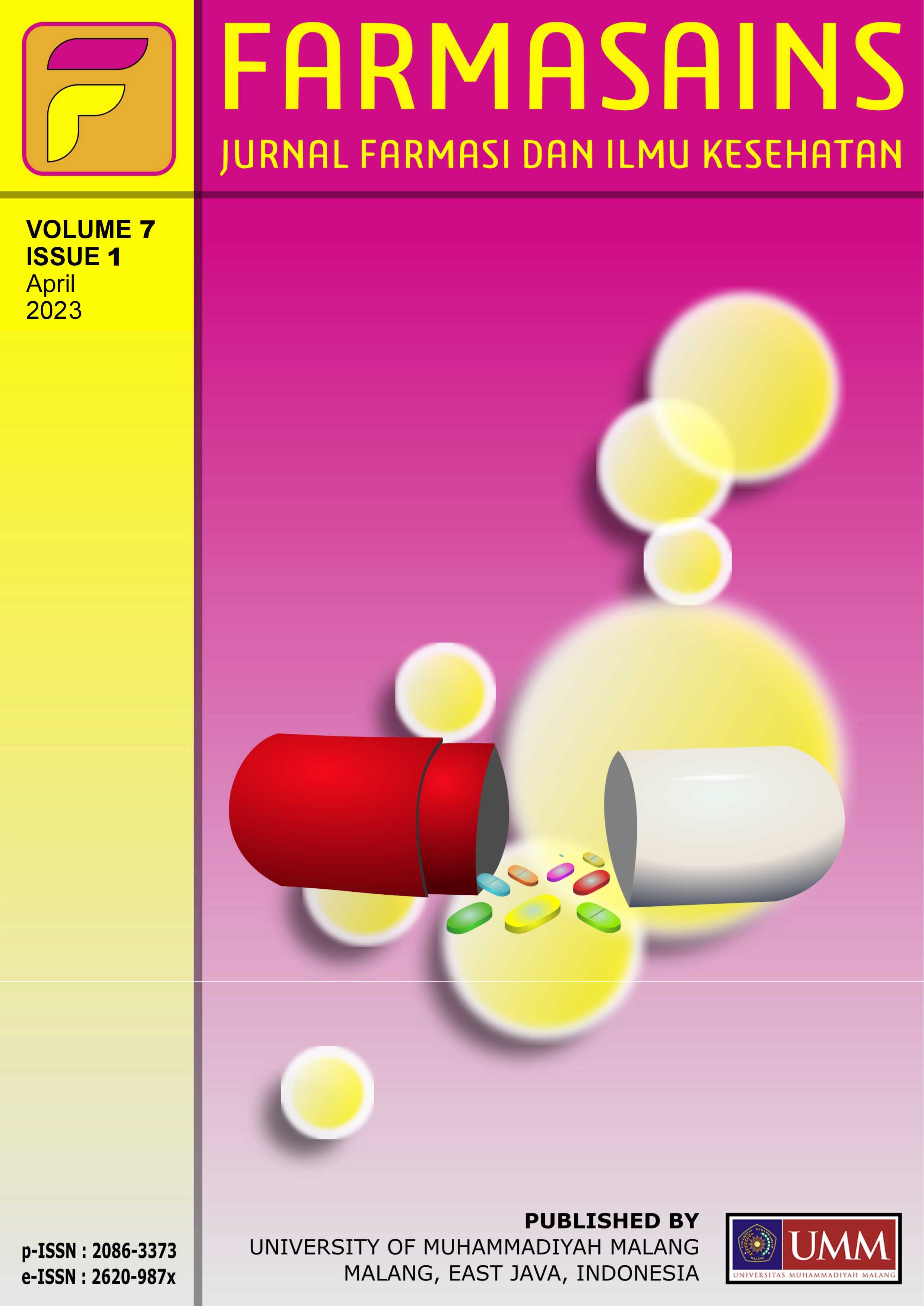Analysis of Compound Activities in Cinchona Officinalis as Antiaging With a Computational Approach
DOI:
https://doi.org/10.22219/farmasains.v7i1.18134Keywords:
cinchona officinalis, antiaging, computational approachAbstract
Several studies on plants that have antiaging properties have been widely published. From these studies, research has not been carried out on compounds in cinchona plants that may provide efficacy as antiaging. Initially, cinchona is a plant that is famous for its antimalarial properties. But the use of cinchona as an antimalarial has now been reduced so research needs to be done to look for another potential of the cinchona plant. This study aims to conduct a computational approach of compounds derived from cinchona as an inhibitor of the elastase, hyaluronidase, collagenase, and tyrosinase enzymes with oleanolic acid, EGCG, and arbutin as comparative compounds. The method used in this study is molecular docking using YASARA, Marvinsketch, PLANTS, VMD, and statistic R software. From the research results, six (6) candidates of active compounds as elastase enzyme inhibitors, twenty one (21) candidates of the active compound as hyaluronidase enzyme inhibitors, four (4) candidates of the active compound as collagenase enzyme inhibitors, and four (4) candidates of the active compound as tyrosinase inhibitors. Two compounds have potential as antiaging, i.e chlorogenic acid and Cyanidol 3-rhamnoglucoside.
Downloads
References
Alonso J. (2004),Treaty of Phytopharmaceuticals and Nutraceuticals. Barcelona: Corpus, p 897-901.
Casciuc L, Horvath D, Gryniukova A, et all, (2019), Pros and Cons of Virtual Screening Based on Public “Big Data”: In Silico Mining For New Bromodomain Inhibitors. European Journal of Medicinal Chemistry, 165:272-258.
Ernawati T, Lotulung PDN, Megawati, et all, (2018), Bioaktivitas Senyawa Turunan Alkaloid Kinkona. Jurnal Agrosains dan Teknologi. 2018;3(2):96-87.
Euromonitor International. Beauty and Personal Care Reaches Record High. Diambil dari: https://blog.euromonitor.com/the-story-behind-the-data-euromonitors-latest-beauty-and-personal-care-data-2019/. Diakses 28 Juli 2019.
Hoffman RW,(2018),Classical Methods in Structure Elucidation of Natural Products. Zurich: Wiley‐VCH Verlag GmbH & Co. KGaA, p. 151-165.
Keene AT, Anderson AL, Phillipson JD,(2013), Investigation of Cinchona Leaf Alkaloids by High-Performance Liquid Chromatography, Journal of Chromatography, 260(1):128-123.
Kementrian Perindustrian Republik Indonesia. Industri Kosmetik Nasional Tumbuh 20%. Diambil dari: https://kemenperin.go.id/artikel/18957/Industri-Kosmetik-Nasional-Tumbuh-20. Diakses 28 Juli 2019.
Mohiuddin AK.(2019), Skin Aging & Modern Age Anti-aging Strategies. Global Journal of Medical Research, 19(2):60-15.
Ramawat KG, Merillon (2013), JM. Phytochemistry, Botany and Metabolism of Alkaloids, Phenolics and Terpenes. Berlin: Springer.
Tu PTB, Tawata S,(2015), Anti-oxidant, Anti-aging and Anti-Melanogenic Properties of the Essential Oils from Two Varieties of Alpinia zerumbet. Molecules, 20(9):16723-40.
Downloads
Published
How to Cite
Issue
Section
License
Copyright (c) 1970 Esti Mulatsari, esti Mumpuni

This work is licensed under a Creative Commons Attribution 4.0 International License.
Authors who publish with this journal agree to the following terms:
a. Authors retain copyright and grant the journal right of first publication with the work simultaneously licensed under a Creative Commons Attribution License that allows others to share the work with an acknowledgement of the work's authorship and initial publication in this journal.
b. Authors are able to enter into separate, additional contractual arrangements for the non-exclusive distribution of the journal's published version of the work (e.g., post it to an institutional repository or publish it in a book), with an acknowledgement of its initial publication in this journal.
c. Authors are permitted and encouraged to post their work online (e.g., in institutional repositories or on their website) prior to and during the submission process, as it can lead to productive exchanges, as well as earlier and greater citation of published work (See The Effect of Open Access).













